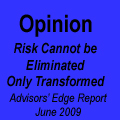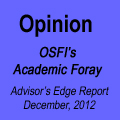Remember the Teachers / BCE deal? Bloomberg has a look back, ten years later:
Another is what happened to BCE after the deal imploded. It flourished—with what Jim Leech, head of Ontario Teachers’ Pension Plan’s private capital arm at the time, says is much of the board and management team his bidding group would have put in charge.
Today the company’s shares are up more than 150 percent from the day the deal collapsed.
“It would have been a home run,” Mark Wiseman, then head of private investment at the competing bidder Canada Pension Plan Investment Board, says. “It didn’t beat what we projected—it crushed what we projected.”
…
Wiseman:Hindsight is 20-20. As it turns out, the company could have easily supported the debt, given its outperformance. What’s missed in the middle of this is that [KPMG’s] Susan Glass helped save Citibank. If she had gone the other way on her going-concern opinion, Citi would have been on the hook for at least C$20 billion in the middle of the financial crisis. Could you imagine the loss they would have taken in trying to place that debt?
Joel Wagner of the BoC has published a Staff Paper, Downward Nominal Wage Rigidity in Canada: Evidence Against a “Greasing Effect”:
The existence of downward nominal wage rigidity (DNWR) has often been used to justify a positive inflation target. It is traditionally assumed that positive inflation could “grease the wheels” of the labour market by putting downward pressure on real wages, easing labour market adjustments during a recession. A rise in the inflation target would attenuate the long-run level of unemployment and hasten economic recovery after an adverse shock. Following Daly and Hobijn (2014), we re-examine these issues in a model that accounts for precautionary motives in wage-setting behaviour. We confirm that DNWR generates a long-run negative relation between inflation and unemployment, in line with previous contributions to the literature. However, we also find that the increase in the number of people bound by DNWR following a negative demand shock rises with inflation, offsetting the beneficial effects of a higher inflation target. As an implication, contrary to previous contributions that neglected precautionary behaviour, the speed at which unemployment returns to pre-crisis levels during recessions is relatively unaffected by variations in the inflation target.
Global bonds were strong today:
•The yield on 10-year Treasuries held at 2.22 percent after declining five basis points on Thursday.
•Ten-year yield on Australian government notes fell five basis points to 2.62 percent
Canada was not immune, with the five-year Canada yield falling to 1.51%, from 1.65% at month-end.
Americans are doing better with their retirement plans:
A string of record 401(k) and IRA account totals now stretches across three consecutive quarters, according to second-quarter data from Fidelity Investments. The data covers 22,155 companies and 15.1 million 401(k) plan participants, as well as 8.8 million IRA accounts. The performance reflects the impressive display of endurance training by a stock market that just keeps on running, as well as increased employee and employer contributions to retirement accounts.
The average 401(k) account balance stands at $97,700 as of June 30. That’s a 9.6 percent gain from the $89,100 average of a year ago, and a big leap from the $73,300 average of five years ago. Average IRA totals, meanwhile, rose to $100,200 from $89,600 a year ago and $73,100 in 2012. For the 12 months ending June 30, market gains accounted for 72 percent of the rise in retirement account balances at Fidelity. Over that same period, the Standard & Poor’s 500 had a total return of 17.9 percent.
…
Employees put a record average of $5,850 into their 401(k)s over the past 12 months, a 4 percent increase from a year ago. Ninety-five percent of active employees contribute to their 401(k)s, and many defer enough of their pre-tax salary to get the average company match, which is 4.5 percent. But about 21 percent of employees can’t, or aren’t, contributing enough to get the full match. Many are likely to have been auto-enrolled into their 401(k) at a salary deferral rate of 3 percent, and left it there.The bit of good news is that many savers don’t have that far to go before getting the full match—53 percent are 1 or 2 percentage points away. Competing financial priorities may mean saving another 1 or 2 percent of salary isn’t feasible until a raise or bonus comes into play. But if extra cash flow exists, a relatively small increase in savings rates can make a big difference over a long career.
| HIMIPref™ Preferred Indices These values reflect the December 2008 revision of the HIMIPref™ Indices Values are provisional and are finalized monthly |
|||||||
| Index | Mean Current Yield (at bid) |
Median YTW |
Median Average Trading Value |
Median Mod Dur (YTW) |
Issues | Day’s Perf. | Index Value |
| Ratchet | 0.00 % | 0.00 % | 0 | 0.00 | 0 | -0.0457 % | 2,443.7 |
| FixedFloater | 0.00 % | 0.00 % | 0 | 0.00 | 0 | -0.0457 % | 4,484.0 |
| Floater | 3.54 % | 3.56 % | 128,595 | 18.36 | 3 | -0.0457 % | 2,584.1 |
| OpRet | 0.00 % | 0.00 % | 0 | 0.00 | 0 | -0.1332 % | 3,058.2 |
| SplitShare | 4.71 % | 4.39 % | 55,285 | 1.38 | 5 | -0.1332 % | 3,652.2 |
| Interest-Bearing | 0.00 % | 0.00 % | 0 | 0.00 | 0 | -0.1332 % | 2,849.6 |
| Perpetual-Premium | 5.39 % | 4.61 % | 61,671 | 5.96 | 17 | 0.0232 % | 2,785.4 |
| Perpetual-Discount | 5.30 % | 5.29 % | 69,270 | 14.90 | 20 | -0.3245 % | 2,923.6 |
| FixedReset | 4.33 % | 4.43 % | 168,840 | 6.33 | 98 | -0.1546 % | 2,409.1 |
| Deemed-Retractible | 5.06 % | 5.38 % | 110,816 | 6.10 | 30 | 0.0055 % | 2,866.1 |
| FloatingReset | 2.60 % | 2.96 % | 41,804 | 4.25 | 9 | -0.0809 % | 2,638.2 |
| Performance Highlights | |||
| Issue | Index | Change | Notes |
| VNR.PR.A | FixedReset | -1.57 % | YTW SCENARIO Maturity Type : Limit Maturity Maturity Date : 2047-08-03 Maturity Price : 21.56 Evaluated at bid price : 21.90 Bid-YTW : 5.12 % |
| IFC.PR.C | FixedReset | -1.21 % | YTW SCENARIO Maturity Type : Hard Maturity Maturity Date : 2025-01-31 Maturity Price : 25.00 Evaluated at bid price : 22.13 Bid-YTW : 5.72 % |
| MFC.PR.J | FixedReset | -1.20 % | YTW SCENARIO Maturity Type : Hard Maturity Maturity Date : 2025-01-31 Maturity Price : 25.00 Evaluated at bid price : 23.81 Bid-YTW : 5.12 % |
| BAM.PF.G | FixedReset | -1.15 % | YTW SCENARIO Maturity Type : Limit Maturity Maturity Date : 2047-08-03 Maturity Price : 22.99 Evaluated at bid price : 24.00 Bid-YTW : 4.67 % |
| BAM.PF.D | Perpetual-Discount | -1.15 % | YTW SCENARIO Maturity Type : Limit Maturity Maturity Date : 2047-08-03 Maturity Price : 22.14 Evaluated at bid price : 22.40 Bid-YTW : 5.53 % |
| NA.PR.W | FixedReset | -1.14 % | YTW SCENARIO Maturity Type : Limit Maturity Maturity Date : 2047-08-03 Maturity Price : 21.38 Evaluated at bid price : 21.70 Bid-YTW : 4.49 % |
| BAM.PR.N | Perpetual-Discount | -1.10 % | YTW SCENARIO Maturity Type : Limit Maturity Maturity Date : 2047-08-03 Maturity Price : 21.51 Evaluated at bid price : 21.51 Bid-YTW : 5.59 % |
| BAM.PF.C | Perpetual-Discount | -1.03 % | YTW SCENARIO Maturity Type : Limit Maturity Maturity Date : 2047-08-03 Maturity Price : 21.67 Evaluated at bid price : 22.02 Bid-YTW : 5.56 % |
| Volume Highlights | |||
| Issue | Index | Shares Traded |
Notes |
| TRP.PR.J | FixedReset | 152,492 | YTW SCENARIO Maturity Type : Call Maturity Date : 2021-05-31 Maturity Price : 25.00 Evaluated at bid price : 26.94 Bid-YTW : 3.60 % |
| MFC.PR.R | FixedReset | 66,124 | YTW SCENARIO Maturity Type : Call Maturity Date : 2022-03-19 Maturity Price : 25.00 Evaluated at bid price : 25.89 Bid-YTW : 4.16 % |
| RY.PR.Q | FixedReset | 56,500 | YTW SCENARIO Maturity Type : Call Maturity Date : 2021-05-24 Maturity Price : 25.00 Evaluated at bid price : 26.65 Bid-YTW : 3.56 % |
| TRP.PR.D | FixedReset | 39,480 | YTW SCENARIO Maturity Type : Limit Maturity Maturity Date : 2047-08-03 Maturity Price : 22.30 Evaluated at bid price : 22.64 Bid-YTW : 4.45 % |
| RY.PR.J | FixedReset | 29,009 | YTW SCENARIO Maturity Type : Limit Maturity Maturity Date : 2047-08-03 Maturity Price : 22.92 Evaluated at bid price : 23.82 Bid-YTW : 4.43 % |
| CM.PR.R | FixedReset | 28,534 | YTW SCENARIO Maturity Type : Call Maturity Date : 2022-07-31 Maturity Price : 25.00 Evaluated at bid price : 25.10 Bid-YTW : 4.51 % |
| There were 12 other index-included issues trading in excess of 10,000 shares. | |||
| Wide Spread Highlights | ||
| Issue | Index | Quote Data and Yield Notes |
| VNR.PR.A | FixedReset | Quote: 21.90 – 22.45 Spot Rate : 0.5500 Average : 0.3714 YTW SCENARIO |
| IFC.PR.C | FixedReset | Quote: 22.13 – 22.69 Spot Rate : 0.5600 Average : 0.4010 YTW SCENARIO |
| GWO.PR.I | Deemed-Retractible | Quote: 21.91 – 22.28 Spot Rate : 0.3700 Average : 0.2422 YTW SCENARIO |
| NA.PR.W | FixedReset | Quote: 21.70 – 22.05 Spot Rate : 0.3500 Average : 0.2268 YTW SCENARIO |
| BAM.PF.G | FixedReset | Quote: 24.00 – 24.29 Spot Rate : 0.2900 Average : 0.1825 YTW SCENARIO |
| PWF.PR.F | Perpetual-Discount | Quote: 24.63 – 24.88 Spot Rate : 0.2500 Average : 0.1560 YTW SCENARIO |













































































































ENB.PF.U To Reset at 4.959% (USD)
Wednesday, August 2nd, 2017Enbridge Inc. has announced:
The four ENB USD-denominated issues have a very narrow range of spreads, limiting the utility of Implied Volatility Analysis for FixedResets, but for what it’s worth:
Click for Big
As I do not track USD issues, there will be no recommendation regarding whether holders should convert or hold their ENB.PR.U shares.
Posted in Issue Comments, US Pay | 4 Comments »